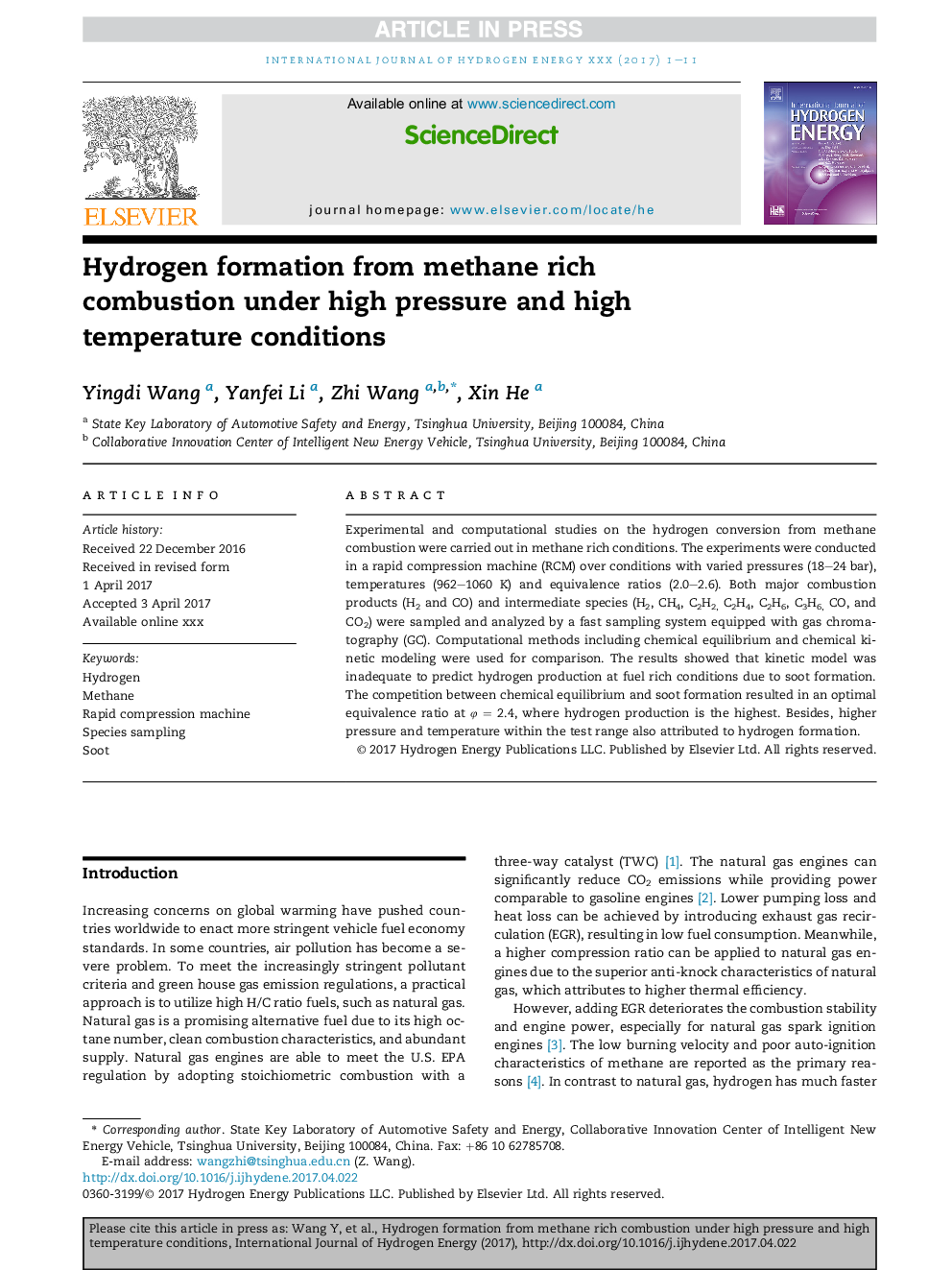| Article ID | Journal | Published Year | Pages | File Type |
|---|---|---|---|---|
| 5146958 | International Journal of Hydrogen Energy | 2017 | 11 Pages |
Abstract
Experimental and computational studies on the hydrogen conversion from methane combustion were carried out in methane rich conditions. The experiments were conducted in a rapid compression machine (RCM) over conditions with varied pressures (18-24Â bar), temperatures (962-1060Â K) and equivalence ratios (2.0-2.6). Both major combustion products (H2 and CO) and intermediate species (H2, CH4, C2H2, C2H4, C2H6, C3H6, CO, and CO2) were sampled and analyzed by a fast sampling system equipped with gas chromatography (GC). Computational methods including chemical equilibrium and chemical kinetic modeling were used for comparison. The results showed that kinetic model was inadequate to predict hydrogen production at fuel rich conditions due to soot formation. The competition between chemical equilibrium and soot formation resulted in an optimal equivalence ratio at ÏÂ =Â 2.4, where hydrogen production is the highest. Besides, higher pressure and temperature within the test range also attributed to hydrogen formation.
Related Topics
Physical Sciences and Engineering
Chemistry
Electrochemistry
Authors
Yingdi Wang, Yanfei Li, Zhi Wang, Xin He,
